
With the addition of a couple of four-season evergreens and a few long-blooming perennials, these spring options could be just the ticket for a corner of the landscape that’s lacking early season appeal.
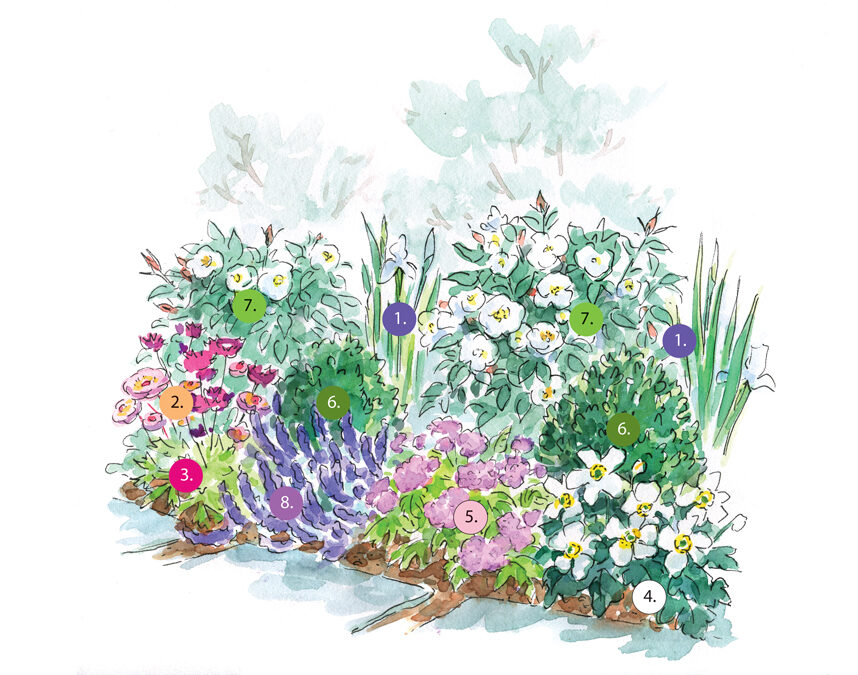
Planting Plan for a spring spectacle
- ‘White Swirl’ Siberian iris
- ‘Cosmopolitan’ geum
- ‘Ruby Wedding’ astrantia
- ‘Wild Swan’ anemone
- Hairy chervil
- Boxwood (Buxus spp. and cvs., Zones 5–8)
- White Knockout® rose (Rosa ‘Radwhite’, Zones 5–9)
- Digger’s speedwell (Parahebe perfoliata, Zones 7–10)

‘Cosmopolitan’ geum has long-lasting flowers
Name: Geum ‘Cosmopolitan’
Zones: 4–9
Size: 18 inches tall and 15 to 18 inches wide
Conditions: Full sun; well-drained soil
Native Range: North American hybrid
I was once a snob about geums—their petals were too orange, too red, too basic—until the Cocktail™ series appeared. With ‘Mai Tai’, ‘Sangria’, and ‘Alabama Slammer’, I had to reevaluate. There were suddenly apricots and dusky reds and pale pinks to consider, all carried by lithe stems that wafted in the sun and breeze. My favorite is ‘Cosmopolitan’, with its double, frilly-petaled, creamy-pink flowers. It’s the essence of rustling dresses and fairy tales and outlasts other cultivars from this series in a bouquet and in the garden. An occasional deadheading is the most it asks to look good from spring to late fall.
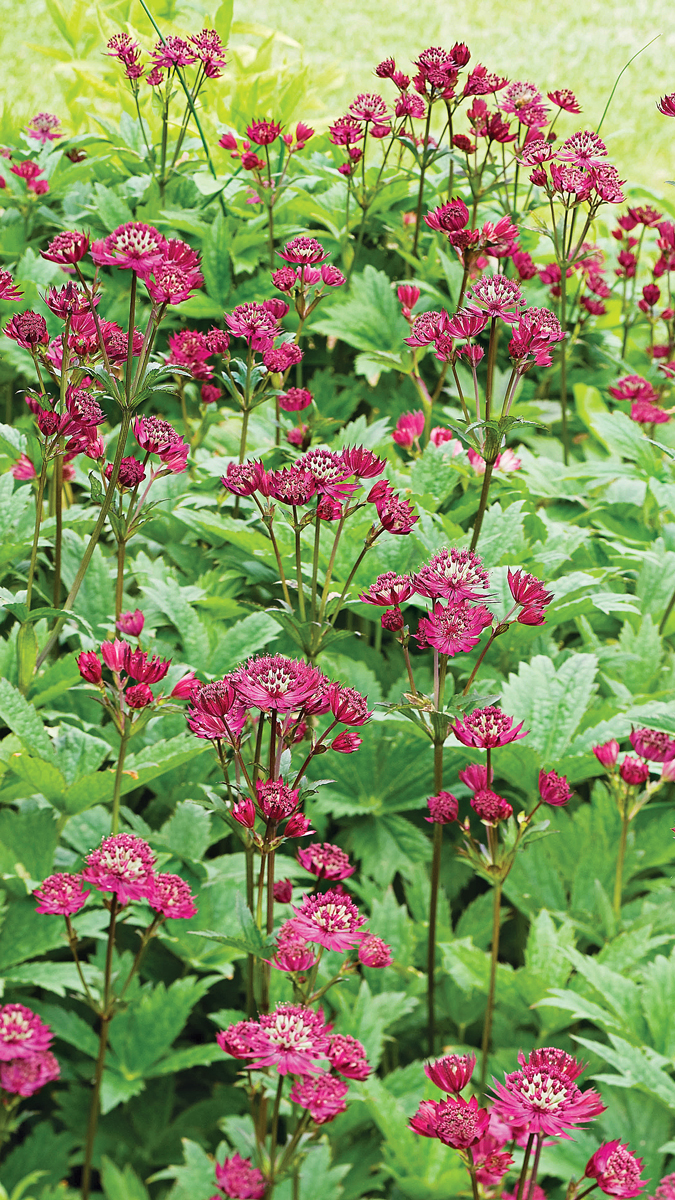
‘Ruby Wedding’ astrantia puts on a show for most of the year
Name: Astrantia ‘Ruby Wedding’
Zones: 4–8
Size: 15 to 24 inches tall and 20 to 24 inches wide
Conditions: Full sun to partial shade; well-drained soil
Native range: Europe
A number of years ago I was at a June wedding, and the bride’s mother had combined lupine (Lupinus spp. and cvs., Zones 3–7) and catmint (Nepeta spp. and cvs., Zones 3–9) with sparkling ‘Ruby Wedding’ astrantia in glass vases on every table. The reddish-maroon pincushion flowers sparkled like jewels in a meadow. When I wandered off to snoop in the garden, I found robust plants 2 feet across and tall, and despite having filled twelve vases that morning, ‘Ruby Wedding’ was still covered with flowers (and bees). The deeply lobed, red-tinted foliage looks great from spring to fall, contrasting beautifully with hostas or shrub roses. Astrantia only grumbles if its soil gets too dry.
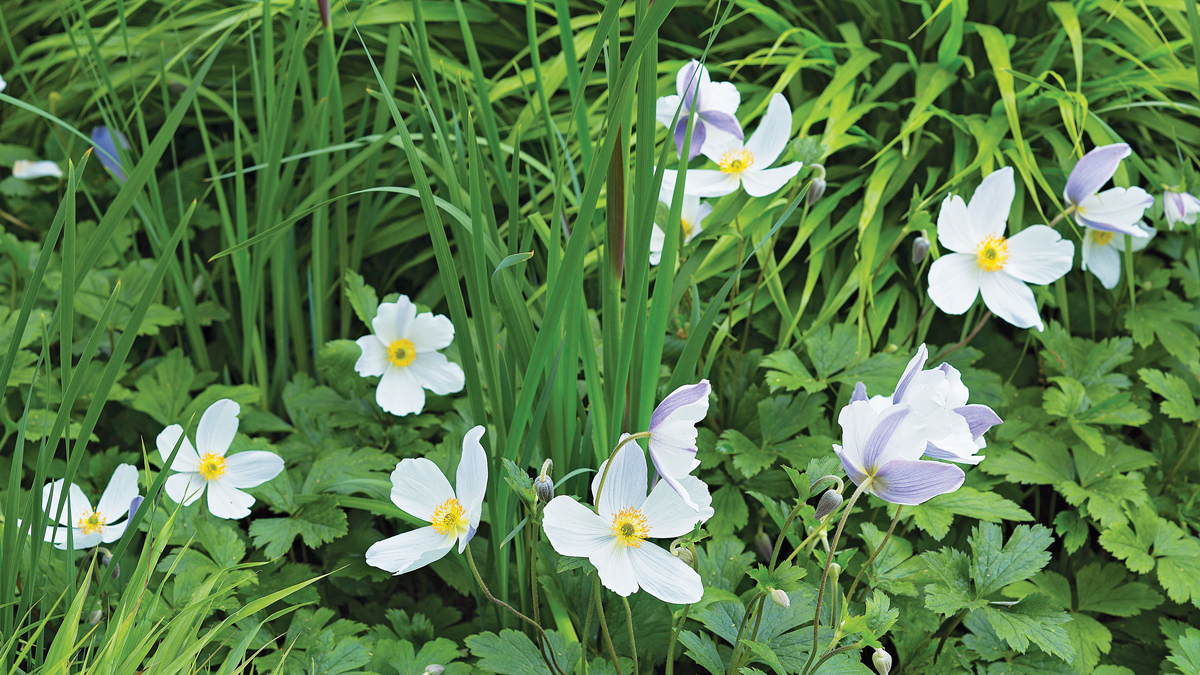
‘Wild Swan’ anemone holds its own against garden thugs
Name: Anemone ‘Wild Swan’
Zones: 6–9
Size: 18 to 24 inches tall and 20 to 24 inches wide
Conditions: Full sun to partial shade; well-drained soil
Native Range: China
I was given a pot of ‘Wild Swan’ anemone seven years ago. The stems waved in the wind, and the white petals with violet blue on the reverse were exquisite—and delicate. A protected container near the house was the obvious home, but instead I threw it into the first open spot I could find in the garden. Come August, I realized I was either luckyor wrong. ‘Wild Swan’ was holding its own next to a bulky hosta and a sprawling hellebore (Helleborus cv., Zones 6–9). I took a chance and relocated it to the base of a purple clematis (Clematis cv., Zones 4–9), and the following June, I knew it was not the least bit “delicate.” It was flowering with abandon and continued into late summer.
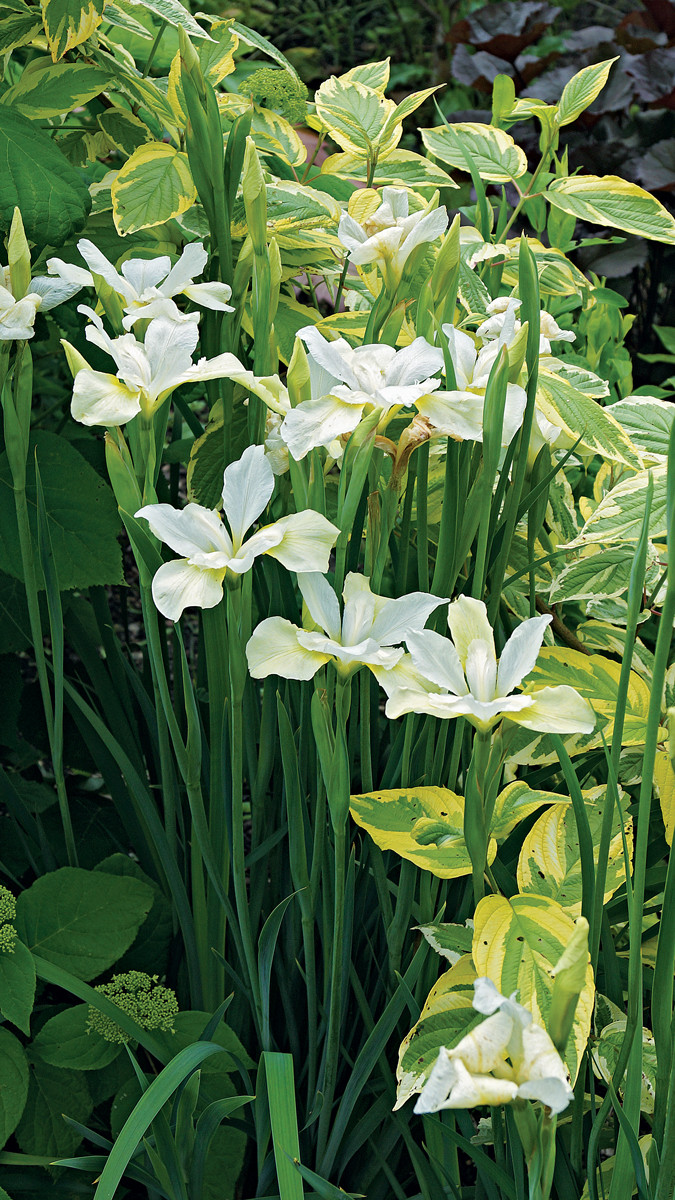
‘White Swirl’ Siberian iris has bright blooms and great foliage texture
Name: Iris sibirica ‘White Swirl’
Zones: 3–9
Size: 15 to 18 inches wide and 30 to 40 inches tall
Conditions: Full sun; moist or wet soil
Native Range: Russia and Central Europe
Nearly as romantic as ‘Cosmopolitan’ geum is one of the more winsome Siberian irises, ‘White Swirl’. The 30-inch upright leaves provide height and structure to the fall garden, propping up potentially floppy neighbors. But the white ruffled spring petals with a hit of green at their throat? Perfection. They remind me of white butterflies flying over tall grass. With its sturdy parentage, this poised white iris doesn’t just grace the late spring garden for a moment—it blooms well into summer. In a sunny moist spot, the most it ever asks is to be divided every four to five years.
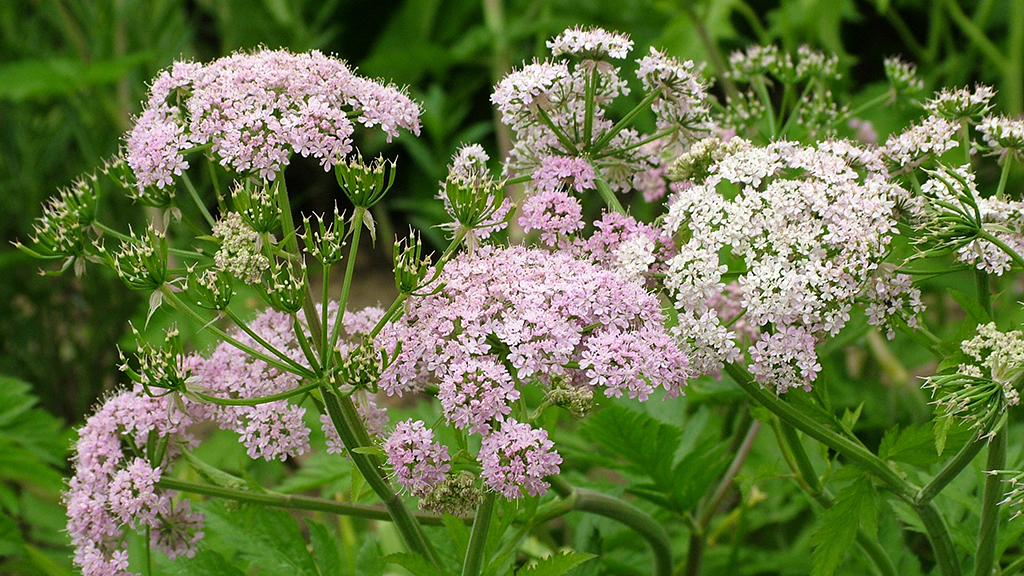
Hairy chervil is a fragrant option for softening edges
Name: Chaerophyllum hirsutum ‘Roseum’
Zones: 6–9
Size: 18 to 24 inches tall and 12 to 18 inches wide
Conditions: Full sun to partial shade; well-drained soil
Native Range: Europe
Renowned plantsman Dan Hinckley wrote in his catalog about hairy chervil that “to see this blossom is to want it,” and everyone who sees it in my garden seems to feel the same way. It resembles a pale pink version of the invasive cow parsley (Anthriscus sylvestris, Zones 6–9) but has none of the spreading tendencies. Delicate, ferny, apple-scented foliage emerges in early spring, followed by a mist of lacy pink umbels in midspring, and the flowers continue into summer. Cut it to the ground by mistake (it can be difficult to identify early in the season), and it pops right back up again. It’s as lovely with tulips as roses and does well in full sun or a bit of shade.
See the whole Tough yet Pretty Plants Collection
Julie Lane Gay gardens in Vancouver, British Columbia.
From Fine Gardening #195
Fine Gardening Recommended Products

The Crevice Garden: How to make the perfect home for plants from rocky places
Fine Gardening receives a commission for items purchased through links on this site, including Amazon Associates and other affiliate advertising programs.

Buffalo-Style Gardens: Create a Quirky, One-of-a-Kind Private Garden with Eye-Catching Designs
Fine Gardening receives a commission for items purchased through links on this site, including Amazon Associates and other affiliate advertising programs.

Gardener's Log Book from NYBG
Fine Gardening receives a commission for items purchased through links on this site, including Amazon Associates and other affiliate advertising programs.

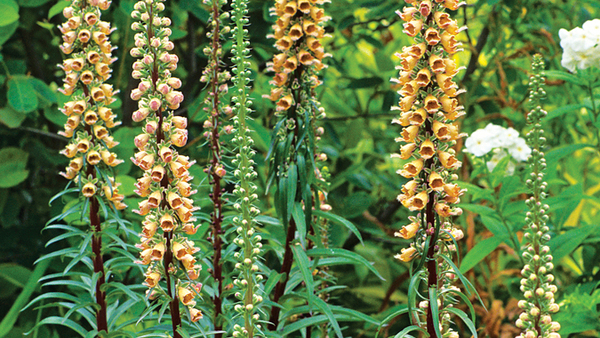

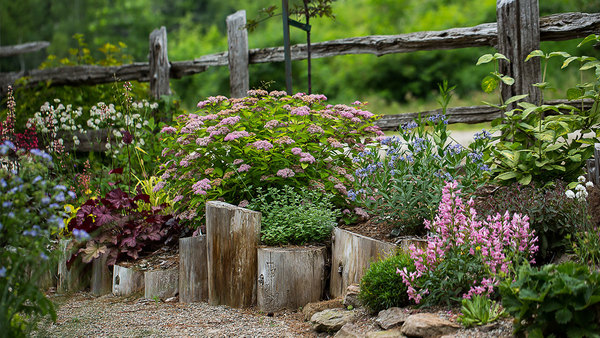














Comments
Log in or create an account to post a comment.
Sign up Log in